Types of Toyota Vios Reverse Sensors
The Toyota Vios reverse sensor is an invaluable safety feature that helps prevent backover accidents by alerting drivers to pedestrians and obstacles in the vehicle's path. Understanding the different types available will help you select the most appropriate system for your needs.
Ultrasonic Reverse Sensors
These sensors use high-frequency sound waves to detect objects. When sound waves bounce back after hitting an obstacle, the system calculates distance based on the return time.
Best for: Everyday parking, precise distance measurement, cost-effectiveness
Detection Range: 0.3-1.8 meters (1-6 feet)
Electromagnetic Reverse Sensors
These sensors generate a magnetic field around the vehicle's rear, detecting changes caused by nearby objects without relying on sound waves.
Best for: Detecting objects that aren't directly behind the vehicle, functioning in noisy environments
Advantage: No visible external sensors on bumper
Radar-Based Reverse Sensors
Using radar technology, these advanced sensors emit low-power waves to analyze distance and speed of objects, including those approaching from the sides.
Best for: Detection of moving obstacles, integration with ADAS systems
Advantage: Functions in all weather conditions
Camera-Based Reverse Sensors
These systems provide visual representation of the area behind the vehicle, often with guidance lines for parking assistance.
Best for: Vehicles with limited rear visibility, comprehensive situational awareness
Advantage: Visual confirmation of obstacles
| Sensor Type | Technology | Main Advantages | Limitations |
|---|---|---|---|
| Ultrasonic | Sound wave detection | Cost-effective, precise distance measurement | May struggle with soft or very small objects |
| Electromagnetic | Magnetic field | No visible sensors, works in noisy environments | Less precise distance measurement |
| Radar-Based | Radar wave reflection | Works in all weather, detects moving objects | Higher cost, more complex installation |
| Camera-Based | Visual imaging | Visual confirmation, parking guidelines | Requires clean lens, limited in darkness |
Expert Tip: Many Toyota Vios owners opt for combined systems, such as ultrasonic sensors with a backup camera, to maximize safety and convenience while reversing.
Specifications and Maintenance of Toyota Vios Reverse Sensors
Understanding the technical specifications and proper maintenance protocols for your Toyota Vios reverse sensors ensures optimal performance and longevity of these critical safety components.
Sensor Type
Most Toyota Vios models feature ultrasonic sensors that emit sound waves and measure the reflection time to detect obstacles.
Detection Range
Standard detection range spans from 0.3 to 1.8 meters (1-6 feet) behind the vehicle, with premium models offering extended ranges.
Field of View
Toyota Vios reverse sensors typically provide a 130-150 degree field of view, ensuring comprehensive coverage of the area behind your vehicle.
Sensor Placement
Sensors are strategically mounted across the rear bumper, usually with 4-6 evenly distributed sensors for optimal coverage.
Obstacle Detection
Capable of detecting stationary and moving obstacles including pedestrians and bicycles, though may have limitations with very low-profile objects.
System Integration
Sensors integrate with the vehicle's central control unit, providing real-time data processing for immediate driver alerts.
Power Supply
Operates on the vehicle's 12-volt electrical system with minimal power consumption to prevent battery drain.
Advanced Features
Higher-end models may include cross-traffic alerts, dynamic guidelines, and integration with other safety systems.
Essential Maintenance Practices
Regular maintenance is crucial for ensuring your reverse sensors function reliably. Follow these professional maintenance guidelines:
| Maintenance Task | Frequency | Importance | Notes |
|---|---|---|---|
| Clean sensors surface | Weekly | High | Use soft, damp cloth to remove dirt and debris |
| Inspect for damage | Monthly | High | Check for cracks, dents or misalignment |
| Check wiring connections | Quarterly | Medium | Ensure connections are secure and free from corrosion |
| System testing | Bi-annually | High | Verify correct operation and alert functioning |
| Professional inspection | Annually | Medium | Part of regular vehicle maintenance schedule |
Warning: Never use high-pressure water directly on sensors during car washing, as this can damage the delicate components. Additionally, avoid painting over sensors or applying aftermarket coatings that may interfere with their functionality.
How to Choose Toyota Vios Reverse Sensors
Selecting the ideal reverse sensor system for your Toyota Vios requires careful consideration of several key factors to ensure compatibility, reliability, and value for your investment.
Compatibility
The most critical factor is ensuring the sensors are specifically compatible with your Toyota Vios model year and variant.
Key consideration: Check OEM part numbers or consult with a Toyota specialist before purchase
Quality & Brand
Higher quality sensors from reputable manufacturers provide more reliable operation and longer service life despite the higher initial cost.
Key consideration: Toyota OEM parts offer guaranteed compatibility but quality aftermarket options may provide better value
Installation Requirements
Some systems are designed for DIY installation, while others require professional expertise and specialized tools.
Key consideration: Calculate total cost including installation when comparing options
| Selection Factor | Importance | What to Look For |
|---|---|---|
| Compatibility | Critical | Specific model compatibility, direct-fit design |
| Quality | High | Reputable brands, warranty coverage, weather resistance |
| Installation | Medium | Clear instructions, required tools, professional vs. DIY options |
| Budget | Medium | Balance between initial cost and long-term value |
| Features | Medium | Alert types (sound/visual), display integration, sensitivity controls |
Expert Advice: If your Toyota Vios didn't come with factory-installed reverse sensors, consider purchasing an OEM-style kit specifically designed for your model year. These typically offer the best integration with your vehicle's existing systems and aesthetics.
Feature Considerations
When evaluating reverse sensor options, consider these additional features that can enhance functionality:
- Alert Types: Systems may provide audible beeps, visual displays, or both. Multi-mode alerts provide better awareness in different conditions.
- Sensitivity Adjustment: The ability to adjust sensitivity can be valuable when towing or in environments with many obstacles.
- Weather Resistance: Higher-quality sensors offer better performance in rain, snow, and extreme temperatures.
- Integrated Display: Some systems can connect to your vehicle's existing display screen or provide a dedicated monitor.
- Appearance: Color-matched sensors that blend with your bumper provide a more factory-installed look.
DIY Installation and Replacement Guide
With the right tools and careful attention to detail, replacing Toyota Vios reverse sensors can be a manageable DIY project for those with basic mechanical skills.
Before You Begin: This procedure involves working with electrical components. If you're not comfortable with automotive electrical work, consider professional installation to avoid damaging your vehicle's systems.
Required Tools and Materials
- New reverse sensor (compatible with your Toyota Vios model)
- Screwdriver set (Phillips and flathead)
- Socket wrench set
- Electrical tape
- Wire cutters/strippers (if needed)
- Safety glasses
- Work gloves
- Optional: Multimeter for testing
Step-by-Step Installation Process
-
Prepare Your Vehicle
Park on a level surface, engage the parking brake, and disconnect the negative terminal of the battery using a wrench. This crucial safety step prevents electrical shorts or system damage during installation.
-
Access the Rear Bumper Area
Depending on your Vios model, you may need to remove trim pieces or the entire bumper cover to access the sensor mounting locations. Consult your vehicle's service manual for specific instructions.
-
Remove the Old Sensor
Locate the faulty sensor on the bumper. Carefully disconnect the electrical connector by pressing the release tab and pulling gently. Then, remove any mounting screws or clips and extract the sensor from its housing.
-
Install the New Sensor
Insert the new sensor into the mounting location, ensuring it sits flush with the bumper surface. Secure it with the appropriate mounting hardware, being careful not to overtighten which could damage the sensor.
-
Connect the Electrical Components
Attach the electrical connector to the new sensor, making sure it clicks into place securely. Check that the wiring is properly routed and not pinched or stretched.
-
Reconnect the Battery
Once installation is complete, reconnect the negative battery terminal and tighten securely with a wrench.
-
Test the System
Start the vehicle and shift into reverse to activate the sensors. Test functionality by placing an object behind the vehicle to ensure the system properly detects obstacles and provides appropriate alerts.
Important Safety Note: Always test your reverse sensor system thoroughly after installation or replacement. Never rely solely on sensors when reversing – always visually check your surroundings and use mirrors.
Troubleshooting Common Installation Issues
| Problem | Possible Cause | Solution |
|---|---|---|
| No alert when reversing | Loose electrical connection | Check all connections and ensure they're properly seated |
| Constant beeping | Sensor misalignment or damage | Adjust sensor positioning or check for physical damage |
| Intermittent operation | Wiring issue or sensor fault | Inspect wiring for damage, test sensor with multimeter |
| System error message | Incompatible sensor or system fault | Verify sensor compatibility, reset vehicle ECU if needed |
Frequently Asked Questions
Several symptoms indicate a faulty reverse sensor:
- Inaccurate distance readings (objects appear closer or farther than reality)
- Continuous beeping even when no obstacles are present
- Error messages appearing on your vehicle's display
- Significant delay in sensor response when backing up
- No alerts at all when obstacles are present
- Inconsistent operation depending on weather conditions
If you notice any of these symptoms, we recommend having your reverse sensor system professionally diagnosed.
Common causes of reverse sensor failure include:
- Physical damage: Impacts, bumper damage, or scrapes can damage sensors
- Environmental exposure: Prolonged exposure to extreme temperatures, moisture, or salt
- Dirt and debris: Accumulated mud, snow, or road grime blocking sensor surfaces
- Wiring issues: Damaged or disconnected wiring harnesses
- Water intrusion: Moisture entering sensor components or connections
- Manufacturing defects: Though rare, some sensors may have inherent quality issues
- Age-related deterioration: Components naturally degrade over time
Regular cleaning and inspection can help prevent many of these issues.
Yes, reverse sensors can sometimes be repaired, though replacement is often more cost-effective. Repair possibilities depend on the nature of the problem:
- Electrical connection issues can often be repaired by cleaning contacts or resoldering connections
- Moisture-affected sensors may be restored by thorough drying and cleaning
- Wiring harness damage can be repaired by splicing or replacing damaged sections
- However, physical damage to the sensor itself or internal electronic failures typically require complete replacement
For diagnosis and repair options, consult with a qualified Toyota technician who can assess whether repair is viable for your specific situation.
No, reverse sensors are not standard equipment on all Toyota Vios models. Their availability depends on:
- Trim level (higher-end variants typically include them)
- Model year (newer models are more likely to have them as standard)
- Market region (standard equipment varies by country)
- Optional packages (may be available as part of safety or convenience packages)
If your Vios didn't come with factory-installed sensors, aftermarket options compatible with your specific model are widely available.
While many aftermarket reverse sensors are marketed as universal, for optimal performance and integration, it's best to use:
- Toyota OEM sensors designed specifically for your Vios model
- High-quality aftermarket sensors that explicitly list compatibility with your Vios year and model
- Systems recommended by certified Toyota mechanics
Using incompatible sensors may result in installation difficulties, unreliable operation, or potential damage to your vehicle's electrical system. Always verify compatibility before purchase, and when in doubt, consult with a Toyota specialist.








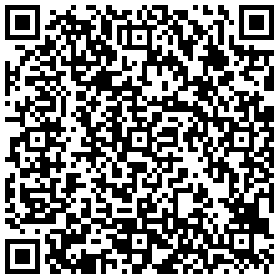






































































































































































































































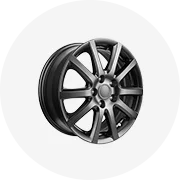
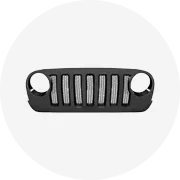
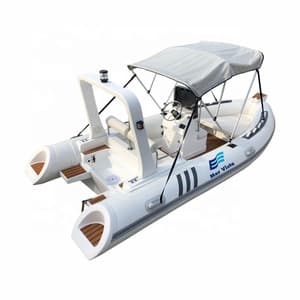
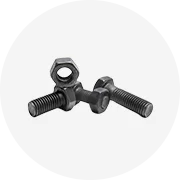
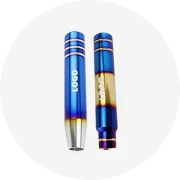
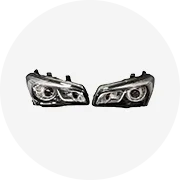
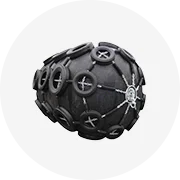
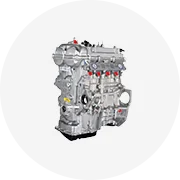
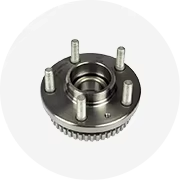
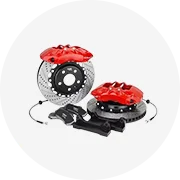
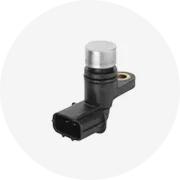



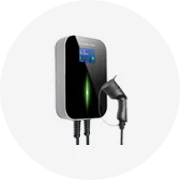
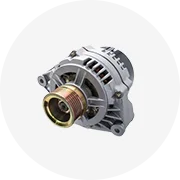






 浙公网安备 33010002000092号
浙公网安备 33010002000092号 浙B2-20120091-4
浙B2-20120091-4